Colorful landscaping in our yards can be rather stunning, both natural and intentionally planted. From the bright blooms, to the healthy green sprawling throughout our surroundings, sometimes the view can’t be beat.
However, don’t let the beauty fool you. Turning the backyard into your personal botanical garden carries potential for significant risk. The levels of toxicity in some plants can be life-threatening to pets and humans alike.
So, before venturing out for a stroll in the fields, or making plans for landscaping your yard, you should be aware of the dangerous plants that could harm or kill pets and humans. Or, maybe some of these plants already exist in your surroundings.
Oleander
Oleander has established its way into many residential gardens, due to the appearance. It is most commonly found tropical and subtropical areas, around streams, rivers, and valleys.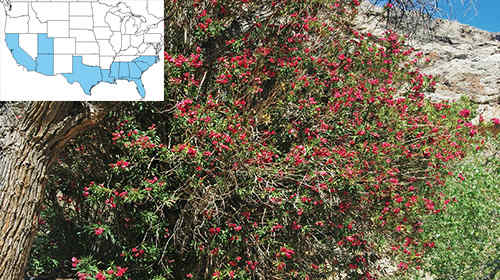 In the US, it’s normally found in the southern region.
In the US, it’s normally found in the southern region.
It typically occurs around stream beds in river valleys, where it can alternatively tolerate long seasons of drought and inundation from winter rains. Nerium oleander is planted in many subtropical and tropical areas of the world. On the East Coast of the US, it grows as far north as Virginia Beach, Virginia, while in California and Texas miles of oleander shrubs are planted on median strips.[
Despite its appeal of colorful and fragrant blossoms, the entire plant contains a deadly substance, which can lead to vomiting, drowsiness, seizures, and slow down the heart.
Treatments might include activated charcoal or a tube inserted in the stomach to flush the system, as well as oxygen and medicines to treat the symptoms.
Daffodil
The Daffodil is bright and colorful flowering plant. And, it’s found in most regions within the US, except in areas that rarely see a frost. The bulbs thrive best with cold hibernation periods.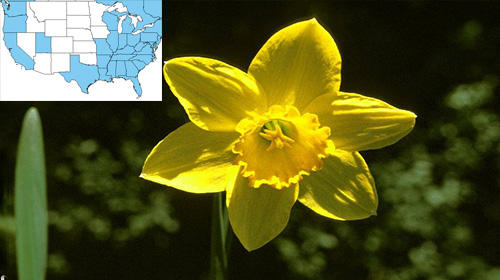 As beautiful as they can be, it’s a poisonous plant, especially the bulb. Symptoms of daffodil poisoning include stomach pain, drooling, vomiting, heart irregularities, tremors, and convulsions. Simply having a bouquet indoors can trigger headaches.
As beautiful as they can be, it’s a poisonous plant, especially the bulb. Symptoms of daffodil poisoning include stomach pain, drooling, vomiting, heart irregularities, tremors, and convulsions. Simply having a bouquet indoors can trigger headaches.
Unless the symptoms are severe, they will often go away with a flushing of water or milk.
Water Hemlock
The water hemlock plant is another deceptive and innocent looking plant. Its dainty appearance, with small and frail-like white buds and a distinct umbrella-like shape, will have you believing it’s harmless.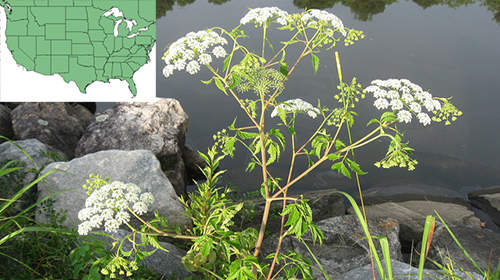 Water Hemlock is commonly found in North America and Europe within pastures, and wet soils such as water edges and irrigation canals.It’s perhaps one of the most toxic plants.
Water Hemlock is commonly found in North America and Europe within pastures, and wet soils such as water edges and irrigation canals.It’s perhaps one of the most toxic plants.
It contains a brownish liquid called cicutoxin and can be deadly. It’s found primarily in the root, but also within the entire plant. This toxin will attack your central nervous system, and has been known to trigger convulsions.
If ingestion is caught early, activated charcoal would be the initial treatment. However, there isn’t any specific antidote, just treatment to help control seizures. This might include benzodiazepines, or a barbiturate to help manage seizures.
Related: How To Tell The Difference Between The Healing “Queen Anne’s Lace” And Deadly “Hemlock”
Hellebore
Hellebores are widely grown in gardens in the US zones 5a to 8b, for their decorative traits. It’s a stout plant with some varieties reaching up to 7ft tall when fully grown and blooming. Many gardeners like hellebore because their flowers bloom during the winter and early spring, and are resistant to frost.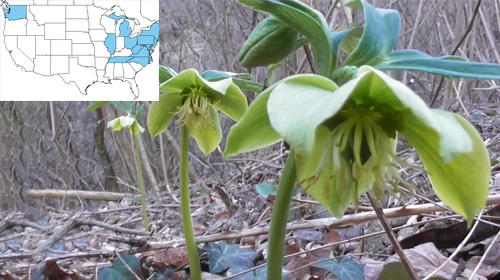 While cases of poisoning from a hellebore plant are rare, it’s most likely due to gardeners handling them with care. The entire plant, from roots to tip of the leaves, is poisonous to both human and animals. The seeds of the plant contain cevadine and veratridine, and considered to be toxic.
While cases of poisoning from a hellebore plant are rare, it’s most likely due to gardeners handling them with care. The entire plant, from roots to tip of the leaves, is poisonous to both human and animals. The seeds of the plant contain cevadine and veratridine, and considered to be toxic.
Symptoms of poisoning from the hellebore plant include vomiting, paralysis, loss of eyesight, or a catharsis effect, which could lead to death. Seek medical attention immediately if you have any of these symptoms after encountering any part of the plant.
Poison Ivy
The name even says it’s poisonous. It’s a nuisance to many, but dangerous to some.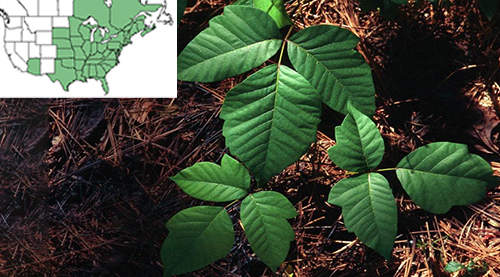 It can cause symptoms ranging from a mild rash, to dangerous swelling in the eyes, mouth, and airway for people who are allergic to it and breathe in toxic smoke when someone is burning it.
It can cause symptoms ranging from a mild rash, to dangerous swelling in the eyes, mouth, and airway for people who are allergic to it and breathe in toxic smoke when someone is burning it.
Predominantly found in North America, it’s not a plant that people plant and grow intentionally. It’s like the obnoxious cousin that makes surprise and unwanted visits.
If you have been exposed to the plant, you might be able to avoid a rash or outbreak by washing up with soap and cold water. Never use hot water though, which will open the pores and allow the oils to penetrate further. If a rash occurs, a diphenhydramine or calamine lotion will help mitigate mild symptoms. In a severe reaction, seek medical attention because further treatment such as corticosteroids might be necessary.
Related: How To Identify Poison Ivy Growing In Your Backyard
Lily of the Valley
Originating in the Northern Hemisphere of Asia and Europe, it’s a hardy plant which allows it to flourish in zones 2-9.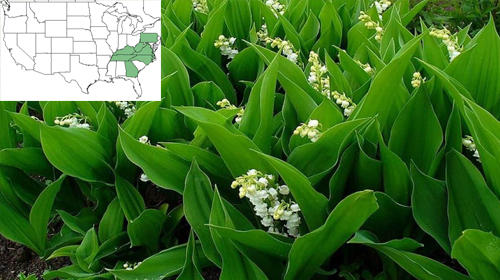 It has a delicate and sweet appearance with dainty bell-shaped petals, but it’s deceiving. If any part of the plant is ingested, it can bring on flu like symptoms such as diarrhea, vomiting, and fatigue. In severe cases, it is known to bring on mental confusion and an irregular heartbeat.
It has a delicate and sweet appearance with dainty bell-shaped petals, but it’s deceiving. If any part of the plant is ingested, it can bring on flu like symptoms such as diarrhea, vomiting, and fatigue. In severe cases, it is known to bring on mental confusion and an irregular heartbeat.
Treatments might include flushing the system through activated charcoal or laxatives.
Belladonna
Also known as “deadly nightshade”, belladonna is native to North Africa, Europe, and Western Asia. It has since been distributed to Great Britain, parts of the Ukraine, Iran, and North America.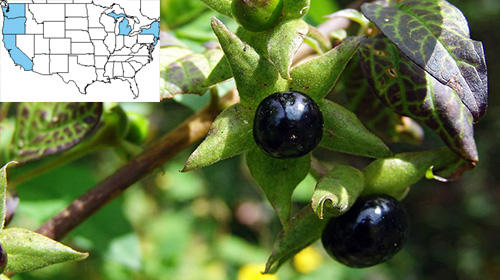 It tends to grow on the edge of forests, river banks, and roads.
It tends to grow on the edge of forests, river banks, and roads.
The attractive berries and foliage contain tropane alkaloids making them extremely toxic and deadly when ingested. It is perhaps one of the deadliest plants that a person can have in their backyard. Symptoms appear within 20 minutes and include breathing difficulty, swelling, rash, nausea, vomiting, blue lips, disorientation, and convulsions.
If digested, induce vomiting and seek medical treatment immediately.
You may also like:
 This Common Driveway Weed is One of Nature’s Most Powerful Survival Plants
This Common Driveway Weed is One of Nature’s Most Powerful Survival Plants
This Bug Will Kill Most Americans During The Next Crisis (Video)
Make Your Own Peppermint Oil – The Best Insect Repellent

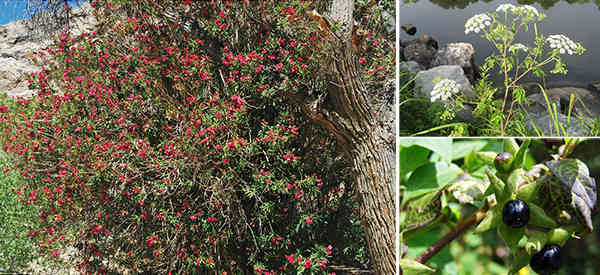













Use witch hazel to remove some of the poison ivy oils.
Poison Ivy can be managed by drinking tomato juice and eating garlic. I have been to the doctor as many as 5 times in one year for steroid shots to alleviate symptoms. The tomato juice and garlic cure it every time easily.
Just thought this might help someone. It saved me.
How much tomato juice and how much garlic? Serious question, although it sounds like you could cure it with a couple plates of spaghetti or a diet of Bloody Marys and shrimp scampi.
I got my current case of poison ivy repairing the irrigation system in a flower bed that had been full of poison ivy that was dug out a few days before. I was very careful but there was enough oil in the soil to get me on one hand.
The day you think you are exposed to poison ivy, it is best to wash in Dawn dish soap from head to toe. Keep using it until you are sure the oils are gone…usually 3 days to be sure. If you see signs of a rash continue it’s use until the rash is gone. The rash will be very minimal if you use Dawn first and continue to use it. Cuts the oils. Pair with the tomato / garlic treatment if you like or any other, but the Dawn will remove the oils very well. Can be started as soon as you see signs of poison ivy as well and will reduce the severity.
I wash with dawn and then pour rubbing alcohol on my arms and hands.
That makes sense as rubbing alcohol or isopropyl alcohol is a degreasing agent and removes oils. Dish washing soap is also a surfactant for grease. Heck, they advertise that it removes cooking grease. Hadn’t thought of that. Thanks, Rabbit. I think I am insensitive to poison oak and poison ivy since I had a dose of it from smoke when I was a child. Of course, I don’t test the insensitivity theory, it’s just that I have never had a reaction to it since the time.
Your distribution maps need serious revisions, all the plants your wrote about can be found in most Canadian Provinces and probably in most states near the 49 line.
We have an oleander thriving next to our home in Las Cruces, New Mexico. Red and white blooms at present. Not shown on map.
Good info but a bit vague. Example: Oleander- Is it harmful by mere contact, by ingestion or simply breathing in any airborne particles from the plant such as pollen?
I stole this from Wikipedia:
“Toxicity:
“Oleander has historically been considered a poisonous plant because some of its compounds may exhibit toxicity, especially to animals, when consumed in large amounts. Among these compounds are oleandrin and oleandrigenin, known as cardiac glycosides, which are known to have a narrow therapeutic index and can be toxic when ingested.
“Toxicity studies of animals administered oleander extract concluded that rodents and birds were observed to be relatively insensitive to oleander cardiac glycosides. Other mammals, however, such as dogs and humans, are relatively sensitive to the effects of cardiac glycosides and the clinical manifestations of “glycoside intoxication”.
“In reviewing oleander toxicity cases seen in-hospital, Lanford and Boor concluded that, except for children who might be at greater risk, “the human mortality associated with oleander ingestion is generally very low, even in cases of moderate intentional consumption (suicide attempts)”. In 2000, a rare instance of death from oleander poisoning occurred when two toddlers adopted from a Siberian orphanage ate the leaves from a neighbor’s shrub in El Segundo, California. A spokesman for the Los Angeles County Coroner’s office stated that it was the first instance of death connected to oleander in the county, and a toxicologist from the California Poison Control Center said it was the first instance of death he had seen recorded. Because oleander is extremely bitter, officials speculated that the toddlers had developed a condition caused by malnutrition, pica, which causes people to eat otherwise inedible material.
“Effects of poisoning
Oleandrin, one of the toxins present in oleander
Ingestion of this plant can affect the gastrointestinal system, the heart, and the central nervous system. The gastrointestinal effects can consist of nausea and vomiting, excess salivation, abdominal pain, diarrhea that may contain blood, and especially in horses, colic. Cardiac reactions consist of irregular heart rate, sometimes characterized by a racing heart at first that then slows to below normal further along in the reaction. Extremities may become pale and cold due to poor or irregular circulation. The effect on the central nervous system may show itself in symptoms such as drowsiness, tremors or shaking of the muscles, seizures, collapse, and even coma that can lead to death.
“Oleander sap can cause skin irritations, severe eye inflammation and irritation, and allergic reactions characterized by dermatitis.
“Treatment
“Poisoning and reactions to oleander plants are evident quickly, requiring immediate medical care in suspected or known poisonings of both humans and animals. Induced vomiting and gastric lavage are protective measures to reduce absorption of the toxic compounds. Activated charcoal may also be administered to help absorb any remaining toxins. Further medical attention may be required depending on the severity of the poisoning and symptoms. Temporary cardiac pacing will be required in many cases (usually for a few days) until the toxin is excreted.
“Digoxin immune fab is the best way to cure an oleander poisoning if inducing vomiting has no or minimal success, although it is usually used only for life-threatening conditions due to side effects.
“Drying of plant materials does not eliminate the toxins. It is also hazardous for animals such as sheep, horses, cattle, and other grazing animals, with as little as 100 g being enough to kill an adult horse. Plant clippings are especially dangerous to horses, as they are sweet. In July 2009, several horses were poisoned in this manner from the leaves of the plant. Symptoms of a poisoned horse include severe diarrhea and abnormal heartbeat. There is a wide range of toxins and secondary compounds within oleander, and care should be taken around this plant due to its toxic nature. Different names for oleander are used around the world in different locations, so, when encountering a plant with this appearance, regardless of the name used for it, one should exercise great care and caution to avoid ingestion of any part of the plant, including its sap and dried leaves or twigs. The dried or fresh branches should not be used for spearing food, for preparing a cooking fire, or as a food skewer. Many of the oleander relatives, such as the desert rose (Adenium obesum) found in East Africa, have similar leaves and flowers and are equally toxic.”
Hope that answers your questions. You definitely don’t want to eat it. You might get a rash from handling it. Earlier in the article it stated that although it makes an attempt to induce insects (bees etc) to come to the flowers, they don’t have the nectar that such insects seek and so they really aren’t attracted to the blossoms and one doesn’t need to be concerned about honey that has been contaminated with nectar from the oleander plant.
What are the risks of these plants to pets?
Tom,
It depends on the pet. We’ve had dogs and cats, horses, goats, chickens, and rabbits over the years, and while some might be considered livestock, the wife treats them all as pets. LOL
Keep in mind that some of my favorite foods / condiments in the Allium family (Onion, Garlic, Leeks) can kill dogs & cats, so it’s best to see what’s around your area and look them up for toxicity for your particular animals.
If my answer to a question above ever appears you will see that dogs are susceptible to oleander poisoning. Apparently the taste of oleander leaves turns from bitter to sweet when dried and then horses like it with bad results. I don’t know about rabbits and chickens. I would say if you are rising free range rabbits and chickens, it would be best not to have oleander plants in close proximity. The article also states that birds don’t seem to be affected by its toxins. Don’t know if “birds” includes domestic birds or just wild birds.
Lily of the valley grows very nicely in NE Ohio.
Tom,
And north central Ohio & Western Pannsylvania.
Thanks for tomato-juice/garlic cure. This is not an ad, but Poison Ivy rashes I got practically laughed at calamine lotion. A product called “Ivy Dry” put the kibosh on the rash.
As a child, 65 years ago, I was constantly bringing home poison ivy. Ivy Dry brings back a lot of memories. It was a sure-fire treatment to stop the itching and remove the rash.
If belladonna is “digested” inducing vomiting won’t make a difference. Perhaps you meant “ingested.”
The article title is a bit misleading. None of these plants will “kill” you unless you eat them or have a severe allergy to them. I don’t think any normal person would try to eat any of them.
the hemlocks, poison hemlock and water hemlock are sometimes mistaken for cow parsnip and causing poisoning. Also you can absorb the toxins thru the skin if you pull them out barehanded.
Here in Florida, Water Hemlock grows near and sometimes even among the Elderberries. I always warn people to make sure that they know the difference if they want to forage.
For old movie buffs, oleander was used by the husband (Vincent Price) to poison his second wife (Gene Tierney) (and probably his first wife ) in the movie “Dragonwyck”, based on the book by Anya Seton. It was set in New York’s Hudson River valley, but it may have been grown in the estate’s greenhouse.
Sunday I saw oliander for sale at a Wal-Mart here in NM. For many decades it used to divide most 2 or 4 lane roads in South central Californiia. ie hwy 99 in San Juaquin Valley. We heard it was poisioneious but it was there all the time anyway.
Last time I had a problem with poison ivy was my early teens. Still memorable.
Oleander is still growing along many freeways and highways in SoCal. It grows thick enough to slow down a car crossing the unimproved center divider. It can thrive on the scant rainfall in SoCal and it is pretty to look at. Plus it is cheap to buy.
We have many of these and others on our rural property.
While there are a few plants the wife likes for their color or aroma, if it doesn’t feed the bees or I can’t eat it, then it only grows here on its own, living or dieing as nature allows.
When you list Water Hemlock
This is the plant Plato described as being used to kill Socrates under Athenian law.
It has a useful edible look alike, Queen Anne’s lace (wild carrot); but, one must know the difference between these two family members.
Poison hemlock (Conium maculatum) and Queen Anne’s lace (Daucus carota) are both in the Apiaceae family.
Both have hollow stems, but poison hemlock’s stem is hairless and has purple blotches, while the stem of Queen Anne’s lace doesn’t have purple blotches and is hairy.
Poison Ivy
We have this everywhere, normally climbing our trees; but, I am generally not allergic to its oils; however, do wash my hands thoroughly after handling it.
We normally cut a chunk of it out at ground level, and pour salt on the root section. A week later you can pull the dead root out of the ground and peel the rest of it off the tree.
This plant and others like it were used for the first chemical warfare, going back centuries. If you build a fire upwind of your ”Enemy” and place these plants onto the coals, the smoke produced by the smoldering pile is inhaled by people, causing horrible irritation in the lungs.
The downside is when you get it going good and the wind shifts direction.
water hemlock and poison hemlock are not the same, Socrates was killed with poison hemlock which slowly paralyses the body from the lower extremities upward. That’s why he was able to describe it. You’re too busy purging and convulsing with water hemlock. Death occurs when the paralysis reaches the respiratory tract and the victim suffocates.
That sounds pretty gruesome.
Poison ivy never bothered me until I got into it with a large scratch on my arm. Sensitive ever since.
I know someone who accidentally got some in bonfire with some cut brush. Sent him to the hospital.
Nice article. However, in Florida, you missed the most deadly one that grows abundantly in suburban and wild areas. Rosary Peas. Easy to spot the ‘berries’/seeds. Bright red with a black cap on one end. Absolutely the deadliest of all.
I first noticed my allergy to Poison Ivy, Poison Oak in Ohio college years and after trying many after exposure remedies mentioned (forget calamine lotion) I use the Dollar Tree etc bottle of Awesome, a degreaser, letting it soak for about 2 minutes on my hands and feet, in between fingers and toes, then soap up and lightly but firmly scrub off with a set aside green scrubby/sponge. Rinse well with cool/cold water. Repeat the next day or two to any area that feel itchy. Also scrub off bottom/sides of my Croc garden shoes, and Hardy Latex Coated Work Gloves from Harbor Freight.
American Indians used to use Jewel Weed to treat poison ivy.
I used it and ever since then I never had a bad rash from poison ivy again.
There are I believe two varieties. Red flower and yellow flower.
The one I used was the yellow flower one.
Crush a juicy part of the stem and rub is all over and around the site.
It is hard to cultivate as it requires growing near a stream and I think partial shade.
The only ones we need to worry over in Arizona are poison oak and poison hemlock. We have other things that will kill, and a lot of our food has to be cooked or it can kill. Aqua poisoning is common with outsiders, as well, from drinking too much fluids. Stick with bitter beer (loaded with hops, a diuretic).
Hidden gardens are popular, cactus, yucca, agave, mesquite, and ironwood trees. Some types of chia (Tarahumara and California) thrive here. Tepary beans are the wild ancestor of modern beans. If the soil is deep, they root down and thrive. Chilis and sweet peppers tend to die back over winter, but, if mulched or sheltered, the roots stay alive and come back. Sorghum tends to survive winter and regrow. Anywhere in the lower 48 states, amaranth self-sows too easy. niio